Prince’s Park is the oldest public park in Liverpool, designed by Joseph Paxton and opened in 1842. It was named after the young Queen Victoria’s first son, later Edward VII. It is the nearest major park to Liverpool’s city centre and is now designated a Grade II* historic park.
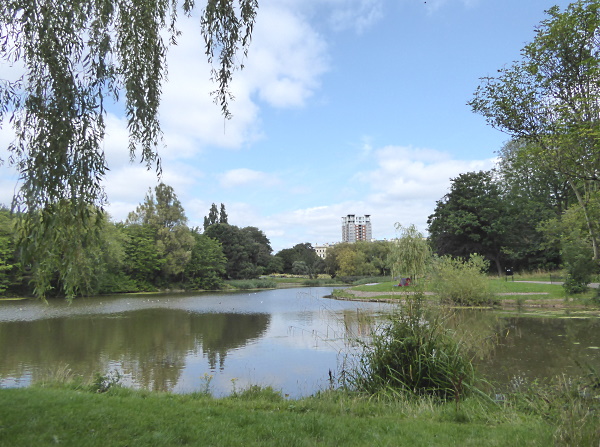
MNA member Katy is also a member of the Friends of Prince’s Park (FoPP), and they are doing wonderful work, planting a great variety of new young trees and identifying their veterans. Katy guided us around some of her favourite trees and we also tried to find some of the champion trees listed on the TROBI database. The Friends are marking many trees with numbered posts bearing QR codes, which lead to the names and descriptions of the trees on the FoPP website. Visitors with smartphones can immediately identify the tree and learn something about it. This is the way of the future!

Our first success was the Cricket Bat Willow Salix alba ‘Caerulea’. When last measured in 2015 it was 23m tall and 329 cm around the trunk, making it the girth & height county champion of Lancashire. We re-measured it at 359cm. On the FoPP website it is listed just as White Willow, their number 708.
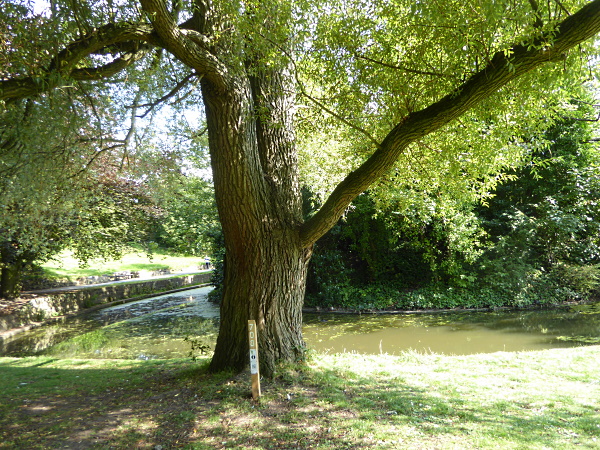
We continued around the lake, admiring two young trees, a Foxglove tree (311) and an unusual and pretty variegated Sweetgum Liquidambar styraciflua ‘Variegata’. (314).
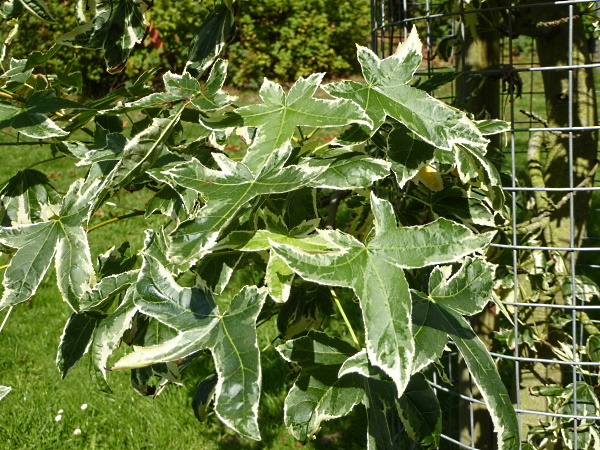
High on a bank west of the lake was another champion, Chinese Privet, Ligustrum lucidum. There are two of them here, rather shrubby, but the larger of the two is girth & height county champion of Lancashire, 8m, 187 cm. It flowers late, but we caught the buds just opening. The blooms are like ordinary English privet, but three or four times the size.

Many of the open grassy areas have been turned over to wildflower meadows, now past their best, but lovely in the sunshine.
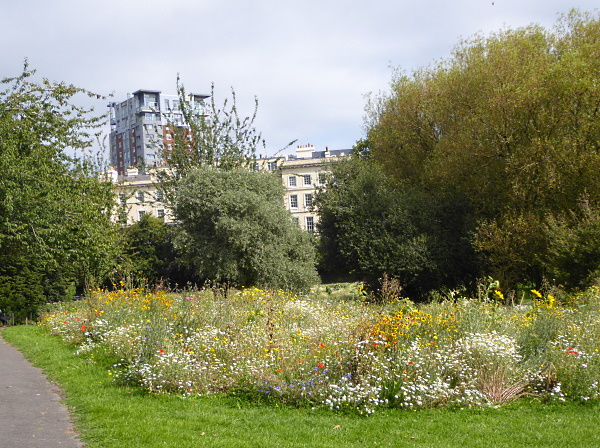
Our third champion was the Willow-leaf Pear Pyrus salicifolia ‘Pendula’. At 165cm, it’s the girth county champion of Lancashire.
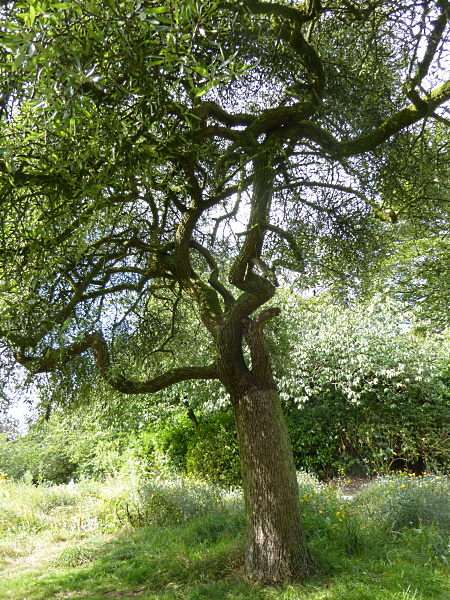
Surprisingly, one of the numbered trees of the park is an English Elm. We thought they had all died and been felled in the 1980s. However, some of the stumps retained the ability to re-grow and are now living on as occasional shrubs in hedgerows. The one in Prince’s Park is next to a fence, so was probably difficult to cut right down when it was first infected, and is now quite a tall clump. Sadly, it isn’t the majestic tall Elm tree of old.
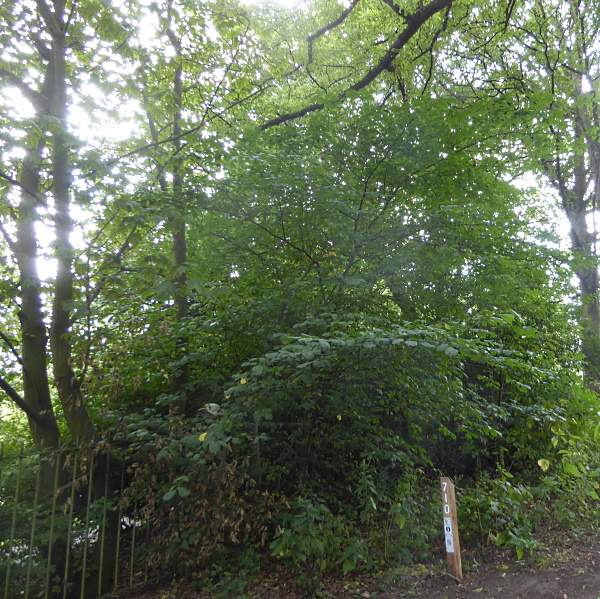
The young Wollemi Pine is doing well, now about 8 feet tall, still in its wire mesh cage, and is fruiting this year. It is the most recent “fossil tree” to be found in modern times, with just a handful of individuals found in a hidden valley in Wollemi Park in Australia in 1994. As a safety measure against extinction, young trees have now been planted all over the world.
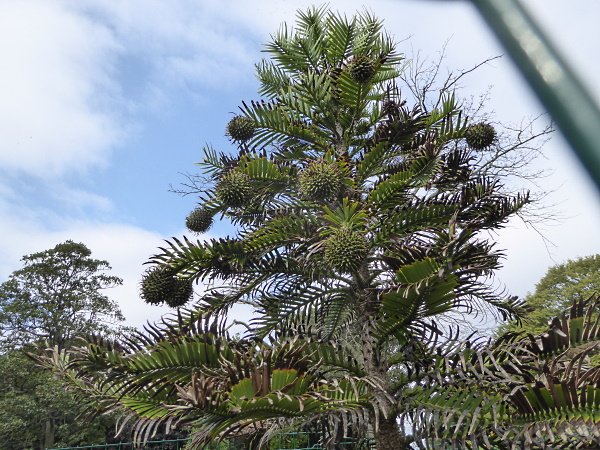
Tree 701 is a gnarled old Oriental Plane near the Sunburst Gates. It is thought to be the oldest tree in the park at around 220 years old. Here’s something that might boggle your mind. The park itself is coming up to 180 years old, so how did a tree that is possibly 40 years older get there? Joseph Paxton was the head gardener at Chatsworth at the time, and was skilled at moving mature trees (he designed special apparatus for it). Could it be that he moved several large trees from Chatsworth to Prince’s Park to enhance the landscape he was designing?
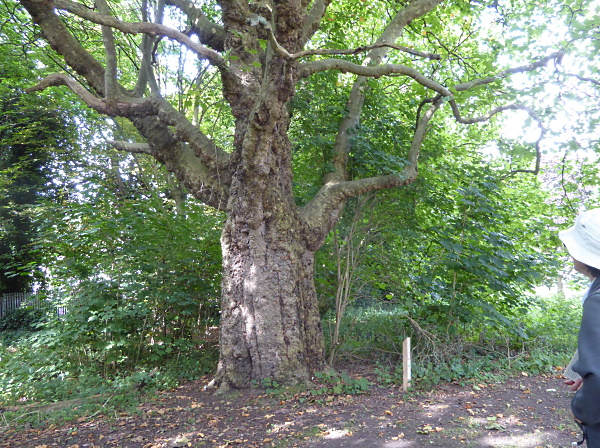
The last champion tree we found was an Indian Bean tree Catalpa bignonioides. It wasn’t measured in 2015 (the last time the recorders came around) and it appears that they couldn’t find it. It is deep in some overgrown woodland at the back of Devonshire Road, obstructed in Bramble and Ivy. In open situations Indian Bean trees make a low dome, but this hemmed-in tree has reached for the sky. It is the height county champion of Lancashire at 15m in 2004. We were able to get a tape around it, and since then its girth has increased from 135 cm to 188 cm.
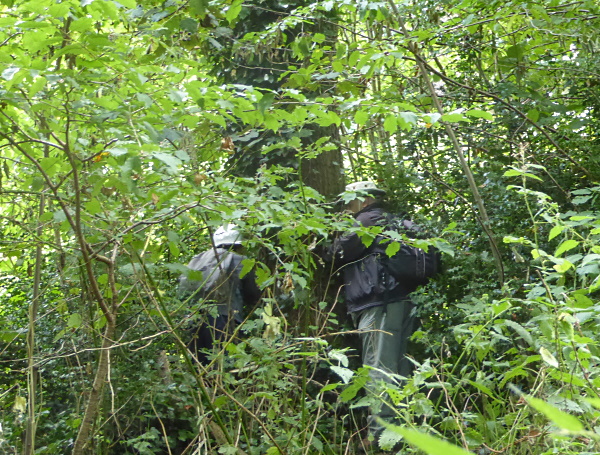
Amongst all this tree-hunting, we were still aware of birds. On the ground were Magpies, Crows, Wood Pigeons and Feral Pigeons, while the lake had just Mallards, Coots and Black-headed Gulls. We heard some Ring-necked Parakeets but didn’t see them. From the south side of the lake we were able to look over to the island and see the family of Mute Swans with six cygnets, dozing on a bank. Further along was a Heron.
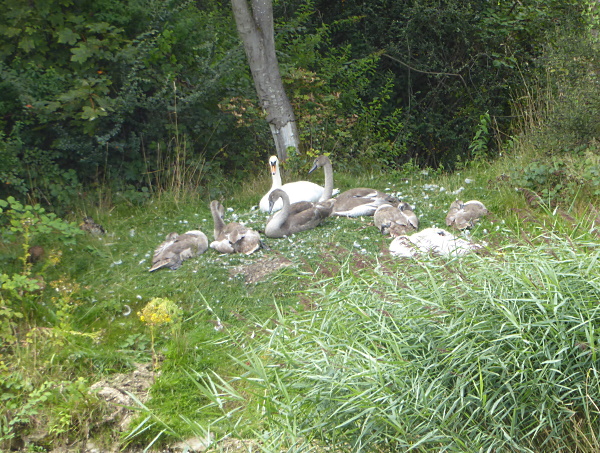
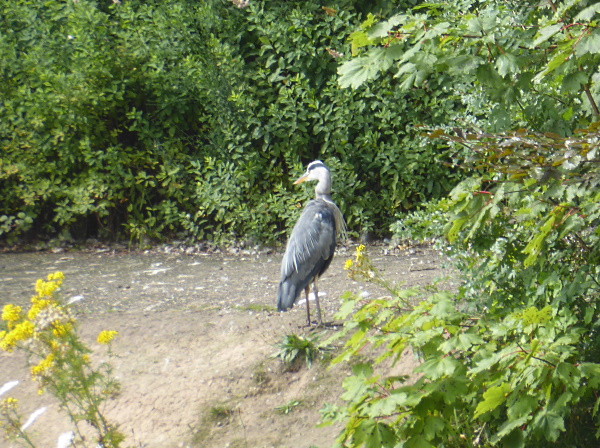
We returned to our starting point along the Ullet Road edge. The hedgerow fruit are all ripening in abundance: Guelder Rose, Dogwood, Sloes on Blackthorn. It’s going to be a good autumn, they say.
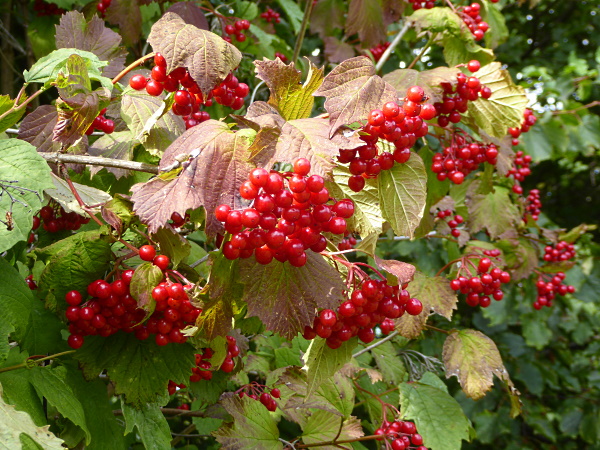
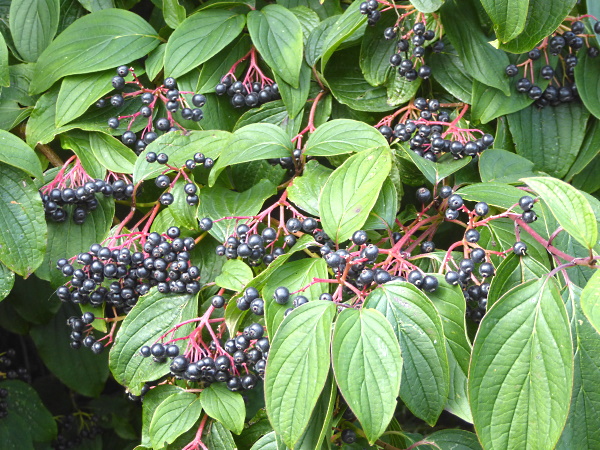
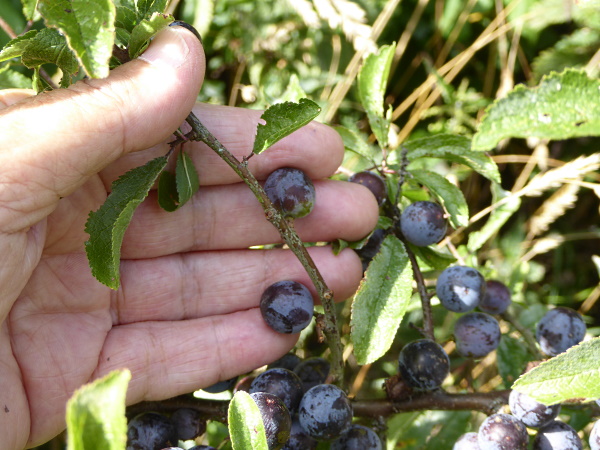
There were some Alders, and we hunted amongst the green cones for a fungal gall called Alder Tongue. See Jeremy Bartlett’s blog “Let it Grow”. It’s caused by a fungal infection from the Taphrina genus, and makes the Alder produce tongue-like galls protruding from the unripe cones. This one looks like a Cobra’s head.
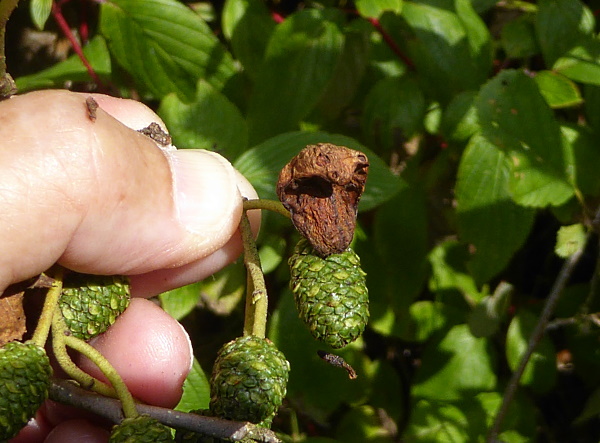
Public transport details: Bus 82 from Liverpool ONE bus station at 10.06, arriving Aigburth Road / Parkfield Road at 10.25. (This was one stop too far, but the Ullet Road stop was, to our dismay, “out of use”). Returned from Park Road / Gredington Street on 84A at 2.15, arriving Liverpool ONE at 2.35.
